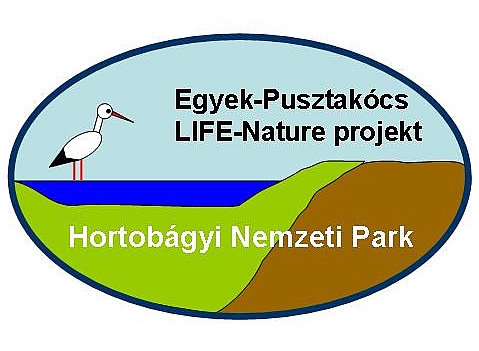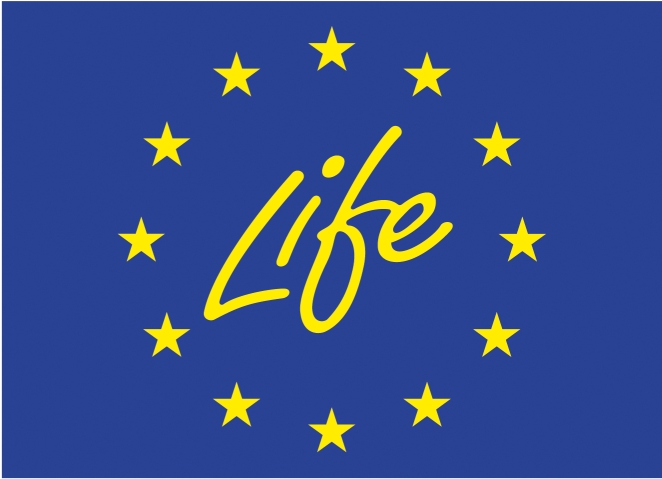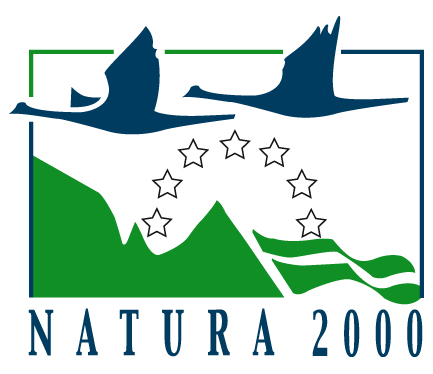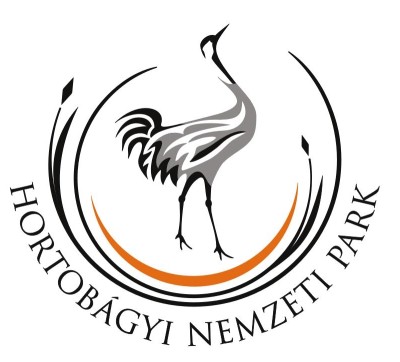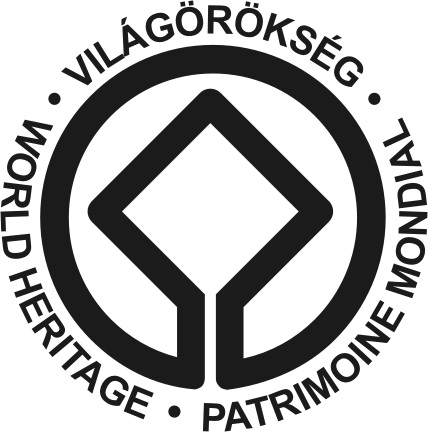PROJECT IN A NUTSHELL
Title: Grassland restoration and marsh protection in Egyek-Pusztakócs
Participants: Hortobágy National Park Directorate (Beneficiary), University of Debrecen (Partner)
Duration: September 1, 2004 - December 31, 2008
Funding: 1 040 000 EURO, rate of cofinancing by European Commission: 67%
Aims and targets:
- to restore two Natura 2000 priority habitat types on 750 hectares of former cropland (the largest grassland restoration in Europe);
- to manage grasslands and marshes by grazing (2500 ha), mowing (400 ha) and fire management (120 ha) to increase the diversity of habitats;
- to decrease human disturbance and increase naturalness of the landscape
Keywords: grassland restoration, ecological corridors, bufferzones, habitat management, grazing, fire management, habitat diversity, decreasing human disturbance, stakeholder involvement
Contact: Szabolcs Lengyel, Project Manager, szabolcslengyel at yahoo.com
PROJECT HISTORY
Initial planning of LIFE-Nature project
2002 and 2003
Designing and planning the Egyek-Pusztakócs LIFE-Nature project with the preparation of the original plans for grassland restoration, afforestation, grazing, fire management and extensive wildlife lands.
Baseline ecological survey
April-September, 2004
In the vegetation period of 2004, a baseline ecological survey is carried out in an area of average naturalness and land use of the Egyek-Pusztakócs marsh and grassland system to assemble a species list of the major terrestrial habitat types and to obtain preliminary information on the quantitative representation of species. The survey site is a 3 ´ 2 km area of c. 1500 ha in the northwest part of the project area. All major habitat types are present in this area and previous information, e.g. a detailed habitat map was available from this area, which made it possible to reliably sample habitat types. During the study, we detected 472 species, most of which were arthropods (210 species) and plants (196). Within arthropods, spiders were most speciose (84), followed by carabid beetles (67), grasshoppers and crickets (31), cicadas (19) and true bugs (9). Species numbers of birds (66) was also high. Total species richness was strongly influenced by the internal heterogeneity, i.e., mosaic pattern, of the habitat patches.
Start of the project
September 1, 2004
The official start date of the project is today. According to the decision by the director of Hortobágy National Park Directorate (HNPD), project coordination is carried out by László Lontay as Project Coordinator and Szabolcs Lengyel as Project Manager (person in charge).
Planning of concrete actions
October, 2004
Concrete planning of actions start, during which many negotiations are held with experts from the HNPD, and the resulting consensus views are gradually incorporated in the plans of implementation.
Modifications in original plans
November, 2004
For several reasons, it becomes necessary to modify and extend the original plans, mostly due to socioeconomic constraints and upon request from one of the largest renter of lands in the project area. In an agreement with Nagyiván Agricultural Llc., grassland restoration is cancelled on some lands where it was originally planned, but in return, grasslands will be restored in a substantially larger area and on more suitable lands. These changes are incorporated in implementation and management plans between December, 2004 and January, 2005.
First draft of the implementation and management plans
January 25, 2005
The first draft of the plan is completed and subjected to review by a panel of experts. These negotiations occur in early February, 2005, and most changes proposed are incorporated in the plans.
Workshop with local stakeholders
February 24, 2005
The four-year LIFE-Nature project is presented to and discussed with local stakeholders from the villages of Egyek and Nagyiván. Stakeholders are informed of the major actions and their impact on the area and they provide valuable input on cooperation and implementation.
Base document on habitat restoration
March, 2005
The concrete actions, land units, land registry numbers, preparations, seed quantities etc. are determined using a newly built georeferenced database. The plan revised by HNPD experts is completed on 31 March, and sent out for review by the Advisory Board and other external experts.
Project presentation at the Gömörszőlős workshop
March 16, 2005
The first presentation of the project to an international audience at the workshop entitled "Introducing the Principles of Sustainability into the Restoration and Management of Natura 2000 Sites", held in Gömörszőlős.
Visit from LIFE-Nature project in Romania
March 17-19, 2005
In the frame of international cooperation, we hosted a delegation from the "Satchinez" LIFE-Nature project from Timisoara/Temesvár (Romania), during which we presented out project and visited the location of major actions.
Website up and running
March 31, 2005
The project website is available in Hungarian and English from this date.
Monitoring activities in 2005
April-September, 2005
Surveys of the taxa proposed for monitoring based on the baseline ecological survey take place on lands to be restored in the fall of 2005. Monitoring activities in the first year are targeted to grassland restoration and grazing and fire management. Due to seasonal changes in fauna, arthropod groups are sampled once every three weeks, whereas vegetation and birds are surveyed twice in the season.
International conference in Túrkeve
April 16, 2005
Our project is presented in a talk at the conference entitled "Experience from conservation-motivated habitat protection and management activities" and organised by Nimfea Nature Conservation Association.
Grass seed harvest
May-June, 2005
Most of the grass seeds necessary for grassland restoration scheduled for fall 2005 (4.8 tons total) will be harvested from nearby areas of suitable conservation status. By doing this, we not only reduce the costs of this action, but also ensure that the seeds to be sown originate from the Hortobágy region, i.e., are genetically identical to the varieties native to the region. It is quite tricky to harvest viable seeds as the seed needs to ripen but should not yet fall to the ground, which leaves a time window of 1-2 days for harvest. We therefore established a network of observers who monitor seed ripening in the entire region and made arrangements with farmers to be able to start harvesting immediately in five or six areas simultaneously. Eventually, we harvested seeds at four locations (three loess grassland fragments and one extensive alkali steppe). The seeds were then transported to Karcag, where they were finely sifted and sorted by grass species. After the sifting, 2.8 tons of seed of two target species (Festuca pseudovina and F. rupicola) were available to prepare the seed mixtures for sowing. The rest of the seeds necessary (2 tons of Poa angustifolia and Bromus inermis) were purchased from commercial sources.
Installation of information boards
May 31, 2005
We have installed information boards on the project in four locations: 1. near the Nyugati Fogadó building, the western entrance to Hortobágy National Park, 2. at the western entry point to the project area, at the start of the designated bike trail, 3. at the southernmost entry point of the project area, opposite from the Kócsújfalu long-distance bus-stop, and 4. at the eastern entry point of the project area, near the "Salt Road" leading to the historic Meggyes innhouse (a museum).
Final version of implementation and management plan
June 2005
The preparation of the final version of the implementation and management plan, which was reviewed by the Advisory Board and external experts. The final version is adopted as the official base document of habitat restoration planned in the project.
Land purchase near the Villongó goose farms
August 31, 2005
The purchase of lands surrounding the goose farms in the Villongó area has taken place in three major steps since September 2004, and is completed at this date. HNPD has purchased 313 ha land and has acquired state ownership and management rights on an additional 75 ha. Goose farming seriously degrades the area because of the grazing, trampling and defecating of the geese. To start the regeneration of grasslands, the lands in the area of the larger farm are rented by HNPD to sheep-grazing, whereas the smaller farm is not rented due to a lack of interest from farmers and is abandoned, giving way to a natural regeneration of the vegetation.
Progress Report 1
August 31, 2005
The first Progress Report of the project is written, in which we summarise the tasks achieved between September 1, 2004, the project start date, and August 31, 2005, and indicate the challenges experienced during Year 1 of the implementation.
Preparation of seed mixtures for sowing
September 2005
After the sifting and separation of the seeds by species, we prepared two seed mixtures. The seed mixture to be sown on loess soils included 50% Festuca rupicola, 25% Poa angustifolia and 25% Bromus inermis, whereas the mixture for alkali soils included 67% F. pseudovina and 33% Bromus inermis. We have deployed help from several volunteers during the handling of the astounding quantity (almost 5 tons) of seeds.
Grassland restoration in Year
October 2005
The first-year restoration occurs in early October on 51 ha loess soils and 127 ha alkali soils. Most areas are in the southwest part of the project area, where a ten-year rental contract between Nagyiván Agricultural Llc. and HNPD has ended on December 31, 2004, which made it possible to change land use in these areas. With the exception of some lands where rental contracts end in 2008, all loess grassland restoration planned (51 of 85 ha planned) was scheduled for Year 1 because this type of restoration has never been conducted in the Hortobágy area and therefore more challenges could be expected, which may need to be addressed later in the project. In the first step of restoration, soil preparation was carried out (deep ploughing twice on former wheat, once on former alfalfa fields, followed by smoothening with disk-harrows). This was followed by sowing (20 kg/ha), then covering the seeds with disk-harrowing. These pictures illustrate the methods and implementation of this first phase of grassland restoration.
Publication of project brochure
October 25, 2005
The Hungarian version of the project brochure is published today (circulation: 3000). Distribution is started in several ways, and the publication is available at HNPD and the project homepage.
Preparation of the Master Plan of long-term rehabilitation
December, 2005
Following a proposal from the Advisory Board of the project, we have prepared the Master Plan for the long-term, landscape-level rehabilitation of the Egyek-Pusztakócs marsh system. The Master Plan synthesises the previous studies of several authors and presents a summary of the principles, targets, methods and means of rehabilitation and associated conservation management. Its central element is a map of potential habitats, which aims to reconstruct the status of the marsh system at the start of historical times, and which will help in defining the targets of rehabilitation and management in most areas of the marsh system.
Preparations for building the infrastructure for grazing
February-March 2006
During the planning of the grazing actions foreseen in the project, we held several on-site visits and negotiations to discuss the construction of the infrastructure necessary for grazing. As a result of these negotiations, we determined the major locations of grazing as well as the location and technical specification of the fold, the electric fence, the well and the drinking trough, the shepherds' house etc., and carried out all processes necessary for the purchases and constructions (e.g. obtained five permits). We were considerate to environmentally friendly solutions wherever it was possible (e.g. sun-collector electricity source and storage unit, adequate waste management etc.). The centre of grazing activities was determined as a 2 km long and 200-300 m wide loess plateau running N to S on the south-western side of Fekete-rét marsh. This plateau has been spontaneously revegetating from an alfalfa field abandoned 11 years ago, and past accounts and monuments (e.g. remnants of three drinking wells) attest that it had been used for grazing several decades ago.
Monitoring surveys continuing in 2006
April-September 2006
Similarly to 2005, monitoring activities are carried out for the target plant and animal groups. In the spring, we have installed 40 permanent plots (5´5m each) to follow the effect of restoration and grazing. Experience from the spring and early summer showed that on former fields on which grass seed mixtures were sown were overgrown by weeds. To halt the further spread and strengthening of weeds, we proposed to conduct mowing prior to the seeds of weedy species ripen.
Installment of shepherds' home and other infrastructure near Fekete-rét
April 2006
For the optimal management of grasslands and for opening up homogeneous marshes, grazing by Hungarian grey cattle was planned in the project. The infrastructure necessary for the grazing actions is installed in the spring of 2006. The fold, encompassing an area of 2 ha and equipped with sun-collector generator and electric fence, has been built in March. The well that provides groundwater for livestock was drilled in March. The shepherds' quarter, a transportable container home, has been constructed in Debrecen in January-February and along with all other infrastructure necessary for grazing (electric fence, sun-collector, drinking troughs etc.) has been transported to the site in early April. By the end of the month, the area is ready for the arrival of the cattle.
Purchase of grey cattle livestock
June 2006
We have started the process to purchase 50 Hungarian grey cattle to be used in the grazing actions of the project. The cattle, along with 130 grey cattle of the Hortobágy Nature Conservation and Gene Preservation PBC, have arrived to the designated grazing area (250 ha) in late May. The conservation purposes of grazing are to distribute grazing more evenly within the project area, the optimal management of restored grasslands, the intake of plants characteristic to classic alkali steppes to the restored grasslands, and the grazing and trampling of marsh edges to open up homogeneous reedbeds.
Mowing in grasslands
June 2006
To control weeds, the mechanic cleaning (mowing) of the fields on which grassland restoration was started in 2005 takes place in mid- to late June. The pictures show some moments of mowing. After mowing, we found that under the beneficial cover of weeds, most of the target grass species had germinated successfully and that grasses are forming a closed sward at places.
Mission from the Commission
June 23, 2006
Our project was visited by the Commission (represented by desk officer Sylvie Ludain) and the external monitoring team (represented by Jan Sliva). During the visit, we overviewed the project implementation, laid out the tasks still ahead of us and presented our most important results and challenges experienced during an on-site visit in the field.
Grazing with mixed band of cattle
July 2006
At the central grazing site at Fekete-rét, a band of grey cattle much larger (180 individuals) than foreseen (50 individuals) has been grazing and trampling marsh edges through six weeks. In mid-June, most of the band (130 individuals) are herded to other sites, and the 50 grey cattle under purchase by the project remains at the site along with numerous other animals (mostly Hungarian speckled cattle) owned by farmers in neighbouring villages (mostly Egyek).
Start of cultivation of wildlife lands
August 2006
In the eastern part of the project area, next to Meggyes forest, we started the extensive cultivation on 33 ha land with the primary aim to enhance the populations of small mammals (voles, mice, shrews), which may lead to the establishment or expansion of populations of birds of prey. Another aim is to provide suitable habitat for partridges, the population of which has drastically decreased in the last decades, and for which an active reintroduction program has been operating in the area. The small-parcel, no-chemical, low-disturbance cultivation should benefit the species by providing hiding and nesting places, and feeding opportunities.
Participation in the First European Congress of Conservation Biology in Eger
August 22-26, 2006
We have given a talk on how the mosaic structure and type of habitat patches influences the biological diversity of grasslands, and how the LIFE-project enables the creation and maintenance of such a functioning mosaic structure. The title of the talk was: "Habitat mosaic structure and patch characteristics influence biodiversity in an alkali wet-dry grassland gradient in Hungary".
Presentation at the 7th Hungarian Ecological Conference in Budapest
September 4-6, 2006
We have presented a poster entitled "The role of habitat-level and landscape-level heterogeneity in maintaining biodiversity through the example of a Hortobágy habitat complex" at this conference. The presentation was awarded the second prize in the poster competition.
Grassland restoration in Year 2
October 2006
Grassland restoration in Year 2 in the south-eastern part of the project area, rented mostly by the Hortobágy Nature Conservation and Gene Preservation PBC, took place in early October (similarly to 2005) using similar methods of soil preparation and sowing. This year we are focusing on alkali grasslands and have prepared the soil and sown alkali seed mixture on 220 ha. Loess mixture was sown on 18 ha. The pictures illustrate the results of the first year of grassland restoration, both for alkali steppes and loess grasslands.
Sowing of winter wheat
October 2006
The extensive cultivation of wildlife lands is continuing, now an additional 36 ha is involved, on which winter wheat is sown.
First open days
October 21 and 28, 2006
The first open days with local stakeholders were organized these day. We presented the project to stakeholders and informed them about the activities planned and already implemented. A separate emphasis was on discussing the opportunities of cooperation and a lot of discussion was going on on how HNPD can assist local farmers in applying for agri-environmental and rural development funding.
Presentation at the 26th Annual Meeting of the Hungarian Biological Society, Budapest
November 9-10, 2006
We have presented the project at the above conference in Budapest by giving a talk on conservation of biological diversity in connection with the LIFE-project being carried out in the area of the Egyek-Pusztakócs marsh and grassland system.
Invited talk at conservation seminar in Túrkeve
November 23-25, 2006
Our project was invited to give a presentation at the seminar "Conservation interventions for plant species and associations in Hungary" organised by the Nimfea Nature Conservation Association. The presentation was only about grassland restoration and was followed by numerous questions and exchange of ideas with several similar projects.
4th Hungarian Conservation Biology Conference-workshop, Tokaj
March 29-31, 2007
The scientific workshop planned in the proposal was organized by HNPD and the Hungarian Biological Society as part of the Hungarian conservation biology conference series. Ninety experts participated. The central theme of the workshop was grassland conservation in Hungary from viewpoints of scientific research, habitat restoration and conservation management and farming/rural policy. The work was divided into three sections: (1) grassland farming, agri-environment, land use; (2) restoration and management of grasslands; (3) the role of grasslands in the conservation of Natura 2000 species and habitat types. Our hosting LIFE-project was presented at the workshop by two scientific talks on the most important results of the project and by one poster on the history of the Egyek-Pusztakócs landscape.
Monitoring activities in 2007
April-September 2007
The third year of the operation of the monitoring system based on botanical and zoological surveys using standardised methods is starting. The scheduling of the project activities resulted in that the year-to-year increase in the tasks related to monitoring (e.g. by involving new areas) was the largest this year. Furthermore, following from the advice during project visits, two additional monitoring tasks were also started this year: (1) a survey of populations on small mammals both in the area of extensive cultivation and in intensively ploughed lands and study of the soils in the areas to be restores only in 2008.
Grazing by cattle started near the smaller farm in the Villongó area
March 2007
Since 2005, the smaller former goose farm has been abandoned. Late in 2006, the farm has been purchased by a local farmer whom our project had worked with and has started to bring Hungarian speckled cattle to the farm. He plans to increase the stock to 100 animals until early summer.
Inclusion of new areas in the grazing system
April 2007
Efficient cooperation established with local farmers made it possible to extend the grazing management of grasslands to substantially larger areas than planned in the original LIFE-Nature proposal. In the grazing area established in the south-western part of Fekete-rét (250 ha), a mixed band of 180 grey and speckled cattle owned mostly by Egyek farmers is grazing throughout the year. The 50 grey cattle purchased by the project will be grazing in a 40-ha area opened up from homogeneous reedbeds by water buffaloes in 2005 and 2006 in the northern part of Fekete-rét. In a combined area of 150 ha south of Meggyes-marsh and on south-western grasslands restored in 2005, a band of 70 speckled cattle newly purchased by the Nagyiván Agricultural Llc. will be grazing. In the northern part of the project area (E, N and W of Csattag marsh, total area c. 450 ha), three bands of cattle owned by two farmers and several Egyek smallholders are grazing. The involvement of farmers in grazing, the optimal way of management of Hortobágy grasslands, is one of the most important result of the project. The established grazing system will ensure the optimal conservation management on more than twice the area planned in the original application well beyond the end of the project.
Spring sowing: cultivation of wildlife lands on the entire planned area
May 2007
The extensive cultivation (using no chemicals, only mechanical weed control, etc.) of wildlife lands has started in the fall of 2006 with the sowing of winter crops and continued this spring by the sowing of the summer crops. By May, all sowing has been completed in the 155 ha where such cultivation was planned. The distribution of crops sown in the fall and spring: 40 ha winter wheat, 26 ha alfalfa, 15 ha sorghum, 15 ha millet, 13 ha spring barley, 46 ha maize.
Mowing on new grasslands
June 2007
As an 'experiment', some lands restored in 2005 (Year 1), are grazed by cattle and sheep this year, which may facilitate the colonisation of plants characteristic on neighbouring grasslands of good conservation status. On the majority of the restored lands, however, mowing needs to be conducted to control weeds. On all lands sown in 2006, mowing is carried out, with the exception of a small control area.
Publication of project brochure in English and German
June 7, 2007
The English and German versions of the project brochure are published (3000 leaflets each), and will be distributed in numerous fora in the second half of the year (workshops, conferences etc.).
Second open days
June 7-8, 2007
We have organised the second open days on Górés-tanya with the participation of 40 invited experts from four national park directorates (including HNPD) and local stakeholders (including cattle-farmers and several subcontractors implementing the project).
Presentation in South Africa
July 1-5, 2007
The quicker-than-expected positive changes during succession after grassland restoration was the subject of our poster presented at the 21st Annual Meeting of the Society for Conservation Biology, held in Port Elizabeth, South Africa.
Third year of grassland restoration
September 2007
This year, restoration is scheduled somewhat earlier (end of September) than in previous years due to the earlier coming of the fall (rains, etc.). This year, only alkali grasslands are restored on 65 ha. The picture taken in the summer of 2007 shows a grassland restored in 2005.
Fire management
September 3, 2008
Unfavourable (cool and wet) weather in 2005 and 2006 did not make it possible to carry out the fire management planned to increase the diversity of habitats in reedbeds in marshes. Thanks to the dry, hot summer of this year, we carried out the planned burning on 110 ha of reedbeds. For the sake of safety, prior to the start of burning, we created 50-m-wide open-water safety zones functioning as barriers to fire by cutting reed around wooden field objects (platforms, observation towers etc.) and around the northern grazing site with the project grey cattle. The primary aim of burning was to open up homogeneous reedbeds, which, coupled with the impact of grey cattle grazing in the marshes, can lead to a mosaic structure of habitats, which may enable the colonisation of the marshes by several plant and animal species that once thrived here, resulting in an increase in species diversity in the marshes.
Progress Report 2
February 29, 2008
The second progress report, including a technical report of all activities between the project start date (September 1, 2004) and December 31, 2007, has been written and submitted to the Commission.
Monitoring activities in 2008
April-September 2008
Monitoring activities are continuing throughout the last year of the project. The studies this year will be complemented by a study of the plant seed-bank present on the fields to be restored at the end of cultivation. Experience gained in earlier years suggests that the ecological processes starting after restoration are largely affected by what kinds of plants have seeds buried in the upper layer of the soil when cultivation ends. We are also conducting botanical surveys in reference grasslands of good conservation status in other areas of Hortobágy National Park, which will provide a basis for comparison with restored grasslands of different age. By these studies, we address the question of how much grassland restoration accelerates natural succession towards species-rich grasslands.
Mowing in Year 3 of grassland restoration
June 2008
Because spring has come earlier than in other years, the blooming and seeding of weeds also occurred earlier than expected, therefore, mowing had to be carried out earlier (before June 15) this year than in previous years. Again, in grasslands restored last year (2007), a stronger mowing method needed to be applied.
Change in the management of the project
July 1, 2008
Project-coordinator László Lontay accepted a full-time job at Aggtelek National Park Directorate starting July 1. He will thus share the remaining tasks of project coordination with Gergő Gábor Nagy, who is employed by HNPD on July 1. We wish the best of luck for both László and Gergő!
Project end
December 31, 2009
The official end date of the project. :( We hope to file the final report soon.
|

